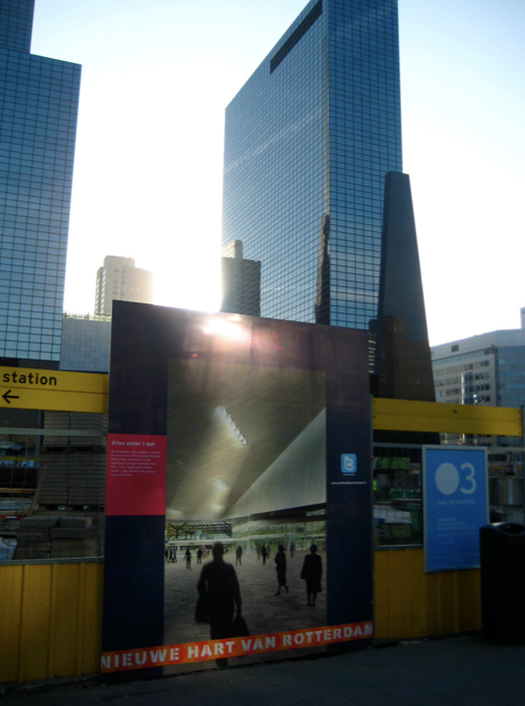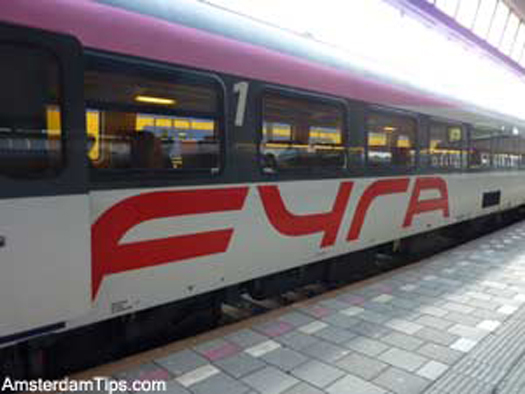
Twelve-year-old children in Rotterdam have never known a time when their city was not being rebuilt around them. And because they know no better, or at least no different, they are not much daunted by the huge scale of the projects underway — still less, by the consequences those projects are likely to have for the nature of their city.
I pondered these thoughts when fighting my way through the vast building site that was once Rotterdam Central Station — but will be, when finished, one day, a multi-modal, six-layered hub for high speed trains, buses, cars and lots and lots of shoppers.
(I know my photo looks over-exposed — but I couldn't help comparing the massive floodlights in the artist's impression of the station-to-be, with the massive amount of free light available from the sun on that same spot.)
When planning started, many moons ago, it was envisaged that the new hub would boast (and in part be paid for by) vast office towers plonked on top; but those have been cancelled. What *is* getting built is a "new heart for Rotterdam" that will contain...shops and casinos. Whether any human beings will enter them, when finished, remains to be seen.
These reflections were all good preparation for my talk about “The True Costs of Big” at a conference in the city organized by de Architect.
The speaker from Arup said that cities needed to go vertical — and showed us slides of proposals for vertical green buildings through the ages — all with green stuff on them. I was compelled to say that a vertical farm costing 2,000 euros a square metre upards to construct might not be economically optimal — especially when the average lettuce costs one euro (or three lettuces for two euros in our local and decidedly horizontal market).
At the conference, most of the architects and developers agreed that Mindless Big was over, but that some large projects would still need to happen.
Well, we shall see. If Big is like Fast, its prospects are not great. On my way back from Rotterdam to Amsterdam, I got into a new Fyra intercity train.
The Fyra was curiously — as in, only me in the carriage — empty. It turned out that you have to pay a 12.50 euro ($18) surcharge to go in it. My Fyra was leaving seven minutes before a normal intercity train from the opposite platform and does the journey 20 minutes faster. But the conductor on my Fyra told me "everyone is taking the normal train" because no Dutch person will pay 12.50 euros to save half an hour travel time on a one hour journey.


Comments [6]
04.25.11
09:32
04.25.11
10:12
I guess you confused things...the surcharge is 2.50 euros compared to the normal train. It used to be much more, but nobody used it...So they changed the price, and now the traffic increases. I guess Dutch will prefer it in the longrun although they are a bit stingy. However, travelling with the slow one you do see the tulip fields during the spring, which is priceless ;)
04.27.11
12:53
04.28.11
02:24
05.26.11
02:40
06.16.11
10:00